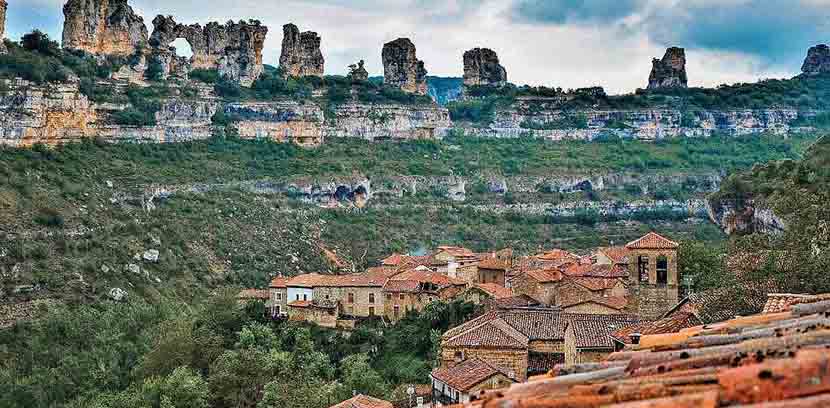
All the rural getaways they are trendy and a great way to get out of town, relax, breathe fresh air and go back a bit. On Spain there are many possible destinations and one of them is the beautiful Castle Orbaneja.
Town in the province of Burgos It offers us a Mozarabic and Christian past, a building built by the Templars, picturesque streets, waterfalls, a fantastic cave and surroundings that add to the visit in the best way.
Castle Orbaneja
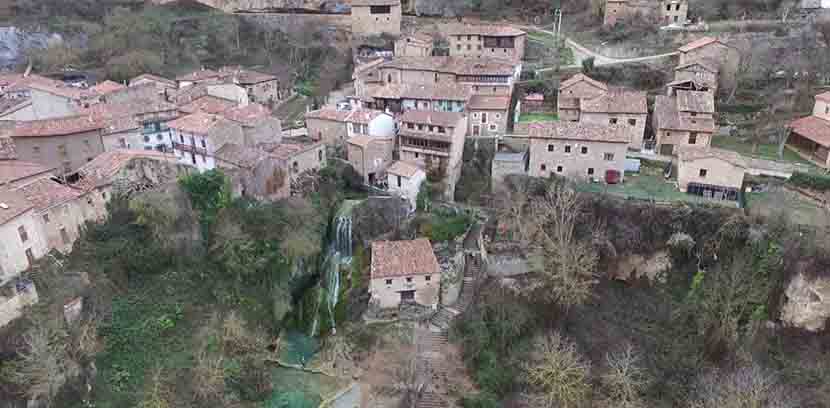
It is in Castilla y León, in the province of Burgos, just on the border of Cantabria, in the Sedano Valley; and its frame is the beautiful Ebro canyon. And the fact is that the river has masterfully carved nature, and here and there on the tour of the canyon, towns and a lot of vegetation have appeared. The Ebro gap is about 200 kilometers deep and its gorges and canyons are now a recreational destination.
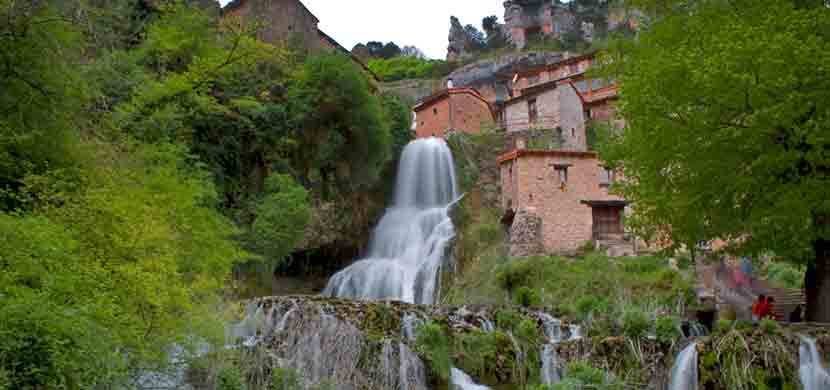
It is located within the Natural Area of Hoces del Alto Ebro and Rudrón 70 kilometers from Burgos and 81 from the town of Frías. Castle Orbaneja It has been declared a Historic Artistic Site in June 1993, and it is a pearl for its urban design but also for this wonderful natural environment of karst origin.
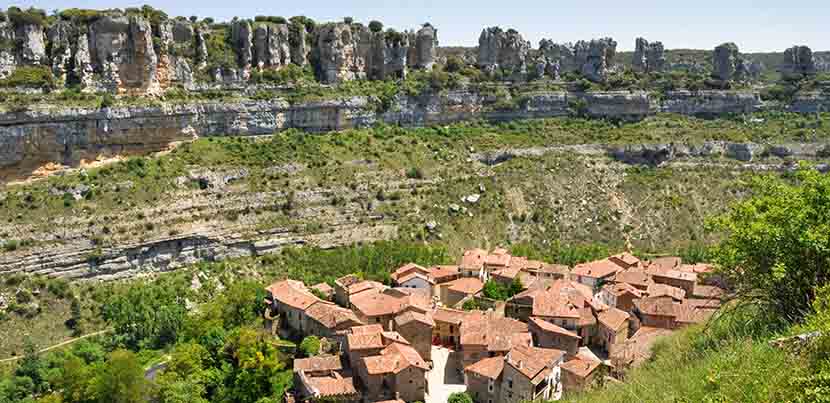
The truth is that In this small town of Burgos, Jews and Mozarabs knew how to coexist with Christians for a long time. It was a point on the alternative route of the so-called French way that used to pass through San Martín de Elines and Santa María de Cervatos. That is why the Catholic Monarchs turned this village into a town and its inhabitants stopped paying taxes.

Today only about 50 people inhabit it, at least that number shows the census, so it is without a doubt a small place that is completed in a short time and on foot. It is best to go in summer or spring, which is when you can be outdoors because in winter it is very cold and tourism declines a lot. While you walk you will surely hear a constant background noise and the waterfall is just there. And she is a waterfall lady, being the first thing you see as soon as you enter the helmet.
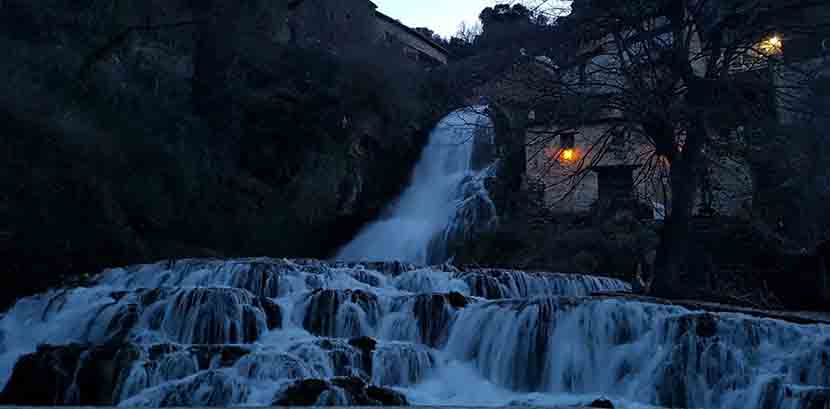
The waterfall, immense, mighty, seems to emerge from the middle of the town as if there were a pipe right there, right between the picturesque stone houses, about Meters 25. And here and there the river has traced stone terraces in its impetuous force, thanks to the tuff terrain, so the postcard is beautiful. The flow is sometimes lower, it depends on the time of year, but there is always water.

The waters are crystal clear and cold and emerge at the base of the Water Cave, another of the wonders of the town, becoming a beautiful stream whose waters are, in the end, those that fall into the 25-meter waterfall that we mentioned before and that flows towards the Ebro.

Although this cave is the most popular there is another called the Cave of Chance that hides inside examples of rock art from the Neolithic Period. It has been declared an Asset of Cultural Interest in 1985. And there is also the Níspero Cave, which is 3600 meters long and remains, this time, of the Megalithic, and the Cave of the Wild Boars.
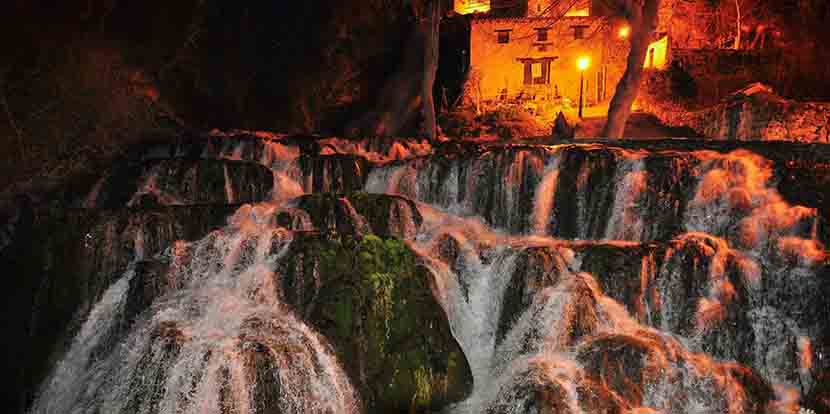
On the other hand, although the town does not have striking buildings its streets are an attraction In themselves. The houses are simple, but old and picturesque. There are houses with wooden balconies, one next to the other, sometimes smoke comes out of the odd chimney, and when you look up in a corner you can see part of the canyon, as if embracing the whole. For taking pictures it can't be better.
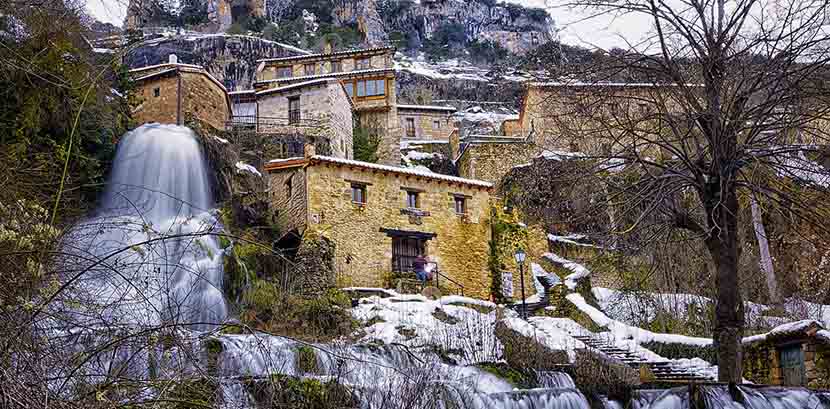
The Templars built the Hospital de San Albín here, in the XNUMXth century, because one of the first roads to Santiago passed, and among the most outstanding houses are the House of the Dogs, with corbels in its walls and the House of the Marquis of Aguilar built on a rocky platform in the municipal square. On the other hand, you will also see some round huts with a false dome of limestone rocks that used to be used to store agricultural utensils.
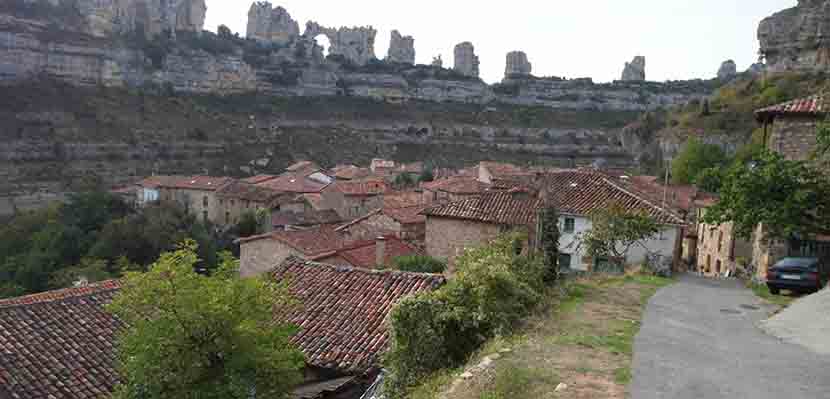
If in your walk you follow the riverbed, passing the waterfall but before reaching the Ebro, you will run into The pools. They are nothing more than ponds carved into the bed of the river whose waters are a Turquoise Color unforgettable. Although in the past the baths were not allowed today and it is a shame because you really want to take a dip. As it cannot be done, it remains only to go through the Pozas looking for the best photos in its encounter with the greater river.
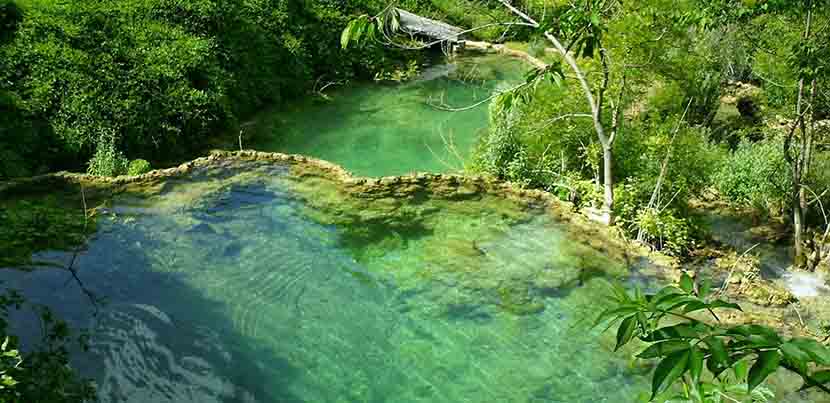
The best way to get to Orbaneja is by car, so with him we can always take some other route. If we have a car, then we can do the Ebro River Canyon Route that travels 32 kilometers in a circular way starting here and going in the direction of Escalada. The Rudrón is the younger brother of the Ebro and is encased in vegetation. One of the most popular roads is also the one that goes between Pesquera del Ebro and Orbaneja with 15 kilometers.
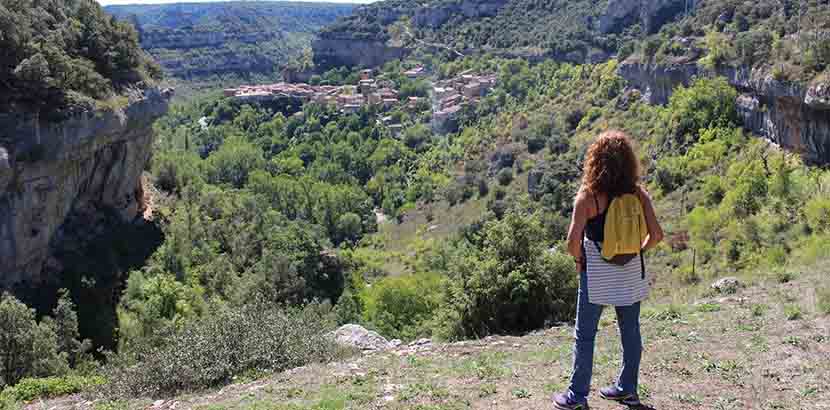
It takes about six and a half hours. The views are beautiful as the greenish water is decorated with eagles, Egyptian vultures, vultures and peregrine falcons. Another possibility is to take a shorter route, of only three kilometers.
You travel only part of the Rudrón canyon, going parallel to the river at the base of the gorge and crossing the town of Covanera, reaching the beautiful lagoon of Pozo Azul. That more than a lagoon ends up being an eternal underwater gallery, one of the longest in Europe.
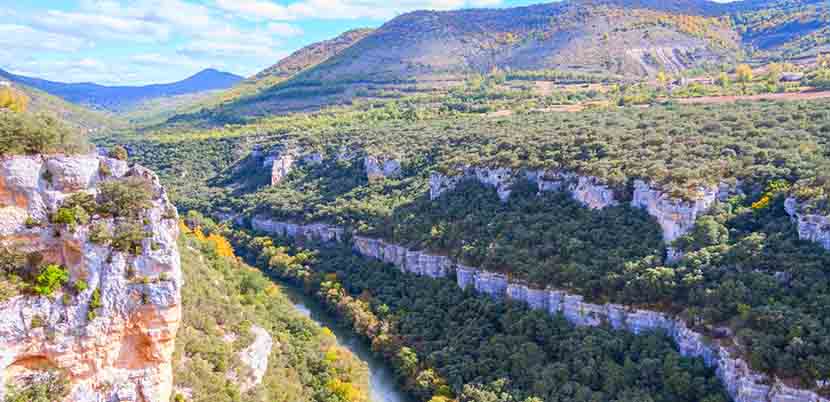
As you can see, one of the best activities you can do in Orbaneja del Castillo is precisely trekking. After arriving early, touring the town and eating, it has a good gastronomy, there is nothing better than doing digestion and burning the calories we eat, walking. To the routes that we already listed we add the Path of the Chozos of five kilometers, which leaves from the Cueva del Agua, the Orbaneja Castle route, with the best views and the Ebro Nature Trail you can do both ways.
Come on, summer begins and this and more rural tourism destinations await us.